
Egon Schiele Painting Reproductions 2 of 3
1890-1918
Austrian Secession/Expressionist Painter
67 Schiele Paintings

Crouching Woman with Green Headscarf 1914
Paper Art Print
$58.48
$58.48
SKU: SCE-17236
Egon Schiele
Original Size: 47 x 41 cm
Leopold Museum, Vienna, Austria
Egon Schiele
Original Size: 47 x 41 cm
Leopold Museum, Vienna, Austria

Crouching Nude Girl 1914
Paper Art Print
$58.48
$58.48
SKU: SCE-17237
Egon Schiele
Original Size: 31.3 x 48.2 cm
Leopold Museum, Vienna, Austria
Egon Schiele
Original Size: 31.3 x 48.2 cm
Leopold Museum, Vienna, Austria
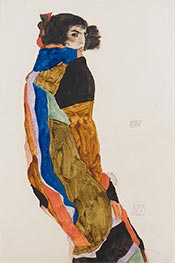
Moa 1911
Paper Art Print
$58.48
$58.48
SKU: SCE-17238
Egon Schiele
Original Size: 47.8 x 31.5 cm
Leopold Museum, Vienna, Austria
Egon Schiele
Original Size: 47.8 x 31.5 cm
Leopold Museum, Vienna, Austria

The Small City IV 1914
Oil Painting
$1071
$1071
Canvas Print
$77.09
$77.09
SKU: SCE-17239
Egon Schiele
Original Size: 99.7 x 120.7 cm
Leopold Museum, Vienna, Austria
Egon Schiele
Original Size: 99.7 x 120.7 cm
Leopold Museum, Vienna, Austria
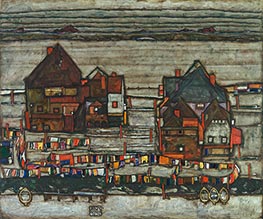
Houses with Laundry (Vorstadt - Suburb II) 1914
Oil Painting
$1223
$1223
Canvas Print
$77.77
$77.77
SKU: SCE-17240
Egon Schiele
Original Size: 100 x 120 cm
Leopold Museum, Vienna, Austria
Egon Schiele
Original Size: 100 x 120 cm
Leopold Museum, Vienna, Austria
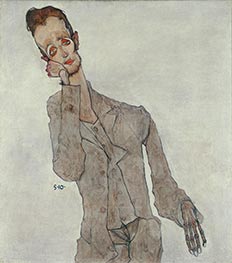
Portrait of Painter Karl Zakovsek 1910
Oil Painting
$1103
$1103
Canvas Print
$84.06
$84.06
SKU: SCE-17241
Egon Schiele
Original Size: 100 x 89.8 cm
Private Collection
Egon Schiele
Original Size: 100 x 89.8 cm
Private Collection

The Poet (Self-Portrait) 1911
Oil Painting
$964
$964
Canvas Print
$92.23
$92.23
SKU: SCE-17242
Egon Schiele
Original Size: 80 x 79.7 cm
Leopold Museum, Vienna, Austria
Egon Schiele
Original Size: 80 x 79.7 cm
Leopold Museum, Vienna, Austria
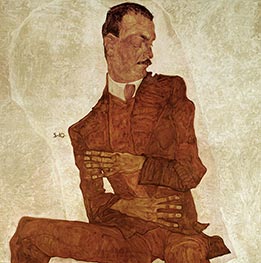
Portrait Arthur Roessler 1910
Oil Painting
$1151
$1151
Canvas Print
$92.91
$92.91
SKU: SCE-17243
Egon Schiele
Original Size: 99.6 x 99.8 cm
Wien Museum Karlsplatz, Vienna, Austria
Egon Schiele
Original Size: 99.6 x 99.8 cm
Wien Museum Karlsplatz, Vienna, Austria
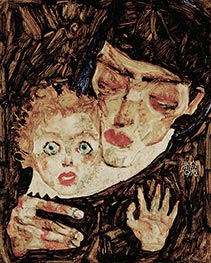
Mother and Child II 1912
Oil Painting
$889
$889
Canvas Print
$61.75
$61.75
SKU: SCE-17244
Egon Schiele
Original Size: 36.6 x 29.3 cm
Leopold Museum, Vienna, Austria
Egon Schiele
Original Size: 36.6 x 29.3 cm
Leopold Museum, Vienna, Austria
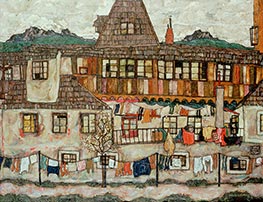
House with Drying Laundry 1917
Oil Painting
$1260
$1260
Canvas Print
$71.80
$71.80
SKU: SCE-17245
Egon Schiele
Original Size: 110 x 140.4 cm
Leopold Museum, Vienna, Austria
Egon Schiele
Original Size: 110 x 140.4 cm
Leopold Museum, Vienna, Austria
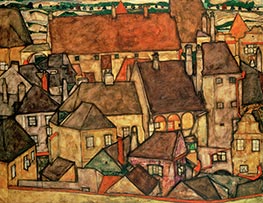
Yellow Town 1914
Oil Painting
$1247
$1247
Canvas Print
$72.32
$72.32
SKU: SCE-17246
Egon Schiele
Original Size: 110 x 140 cm
Private Collection
Egon Schiele
Original Size: 110 x 140 cm
Private Collection
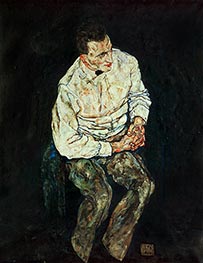
Portrait of Karl Gruenwald 1917
Oil Painting
$1309
$1309
Canvas Print
$71.98
$71.98
SKU: SCE-17247
Egon Schiele
Original Size: 140.7 x 110.2 cm
Private Collection
Egon Schiele
Original Size: 140.7 x 110.2 cm
Private Collection
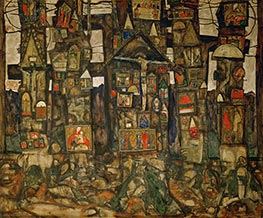
Shrines in the Wood 1915
Oil Painting
$1266
$1266
Canvas Print
$77.59
$77.59
SKU: SCE-17248
Egon Schiele
Original Size: 100 x 120.5 cm
Private Collection
Egon Schiele
Original Size: 100 x 120.5 cm
Private Collection
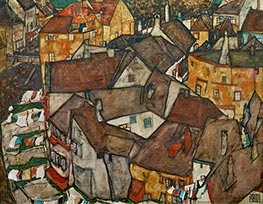
Krumau - Crescent of Houses (The Small City V) 1915
Oil Painting
$1178
$1178
Canvas Print
$72.66
$72.66
SKU: SCE-17249
Egon Schiele
Original Size: 109.7 x 140 cm
The Israel Museum, Jerusalem, Israel
Egon Schiele
Original Size: 109.7 x 140 cm
The Israel Museum, Jerusalem, Israel

Self-Portrait with Bent Head 1912
Oil Painting
$827
$827
Canvas Print
$61.75
$61.75
SKU: SCE-17250
Egon Schiele
Original Size: 42.2 x 33.7 cm
Leopold Museum, Vienna, Austria
Egon Schiele
Original Size: 42.2 x 33.7 cm
Leopold Museum, Vienna, Austria
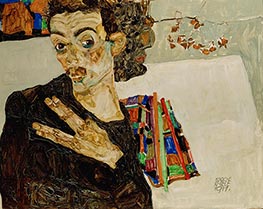
Self-Portrait with Spread Fingers 1911
Oil Painting
$840
$840
Canvas Print
$61.75
$61.75
SKU: SCE-17251
Egon Schiele
Original Size: 27.5 x 34 cm
Wien Museum Karlsplatz, Vienna, Austria
Egon Schiele
Original Size: 27.5 x 34 cm
Wien Museum Karlsplatz, Vienna, Austria
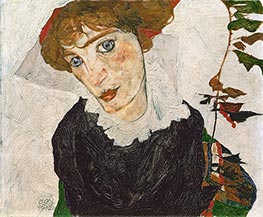
Portrait of Wally 1912
Oil Painting
$902
$902
Canvas Print
$61.75
$61.75
SKU: SCE-17252
Egon Schiele
Original Size: 32.7 x 39.8 cm
Leopold Museum, Vienna, Austria
Egon Schiele
Original Size: 32.7 x 39.8 cm
Leopold Museum, Vienna, Austria
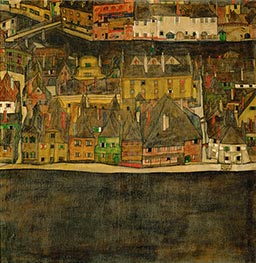
Small Town (III) 1913
Oil Painting
$1246
$1246
Canvas Print
$90.87
$90.87
SKU: SCE-17253
Egon Schiele
Original Size: 98.5 x 90.5 cm
Private Collection
Egon Schiele
Original Size: 98.5 x 90.5 cm
Private Collection
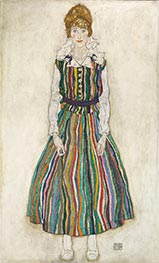
Portrait of Edith Schiele 1915
Oil Painting
$1845
$1845
Canvas Print
$61.75
$61.75
SKU: SCE-17254
Egon Schiele
Original Size: 180 x 110 cm
Haags Gemeentemuseum, The Hague, Netherlands
Egon Schiele
Original Size: 180 x 110 cm
Haags Gemeentemuseum, The Hague, Netherlands

Portrait of Paris von Gütersloh 1918
Oil Painting
$1301
$1301
Canvas Print
$73.34
$73.34
SKU: SCE-17255
Egon Schiele
Original Size: 140 x 110.3 cm
Minneapolis Institute of Arts, Minnesota, USA
Egon Schiele
Original Size: 140 x 110.3 cm
Minneapolis Institute of Arts, Minnesota, USA
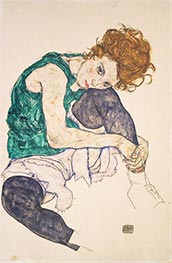
Seated Woman with Bent Knees 1917
Paper Art Print
$58.48
$58.48
SKU: SCE-17256
Egon Schiele
Original Size: 46 x 30.5 cm
National Gallery, Prague, Czech Republic
Egon Schiele
Original Size: 46 x 30.5 cm
National Gallery, Prague, Czech Republic
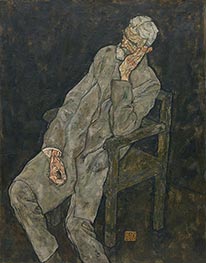
Portrait of Johann Harms 1916
Oil Painting
$1284
$1284
Canvas Print
$73.17
$73.17
SKU: SCE-17257
Egon Schiele
Original Size: 141 x 110.8 cm
Solomon R. Guggenheim Museum, New York, USA
Egon Schiele
Original Size: 141 x 110.8 cm
Solomon R. Guggenheim Museum, New York, USA
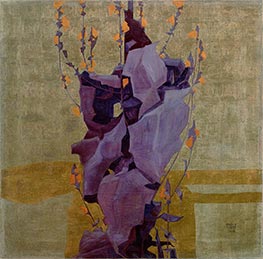
Stylized Flower on a Decorative Background 1908
Oil Painting
$765
$765
Canvas Print
$93.59
$93.59
SKU: SCE-17258
Egon Schiele
Original Size: 65.5 x 65.5 cm
Leopold Museum, Vienna, Austria
Egon Schiele
Original Size: 65.5 x 65.5 cm
Leopold Museum, Vienna, Austria
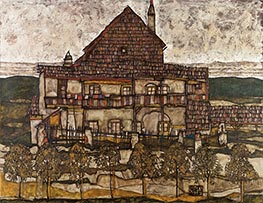
House with Shingle Roof (Old House II) 1915
Oil Painting
$1678
$1678
Canvas Print
$72.32
$72.32
SKU: SCE-17259
Egon Schiele
Original Size: 110 x 140 cm
Leopold Museum, Vienna, Austria
Egon Schiele
Original Size: 110 x 140 cm
Leopold Museum, Vienna, Austria